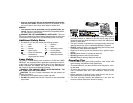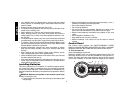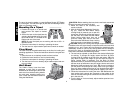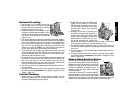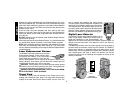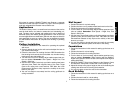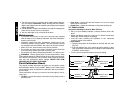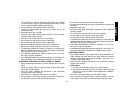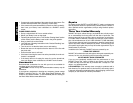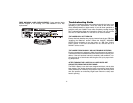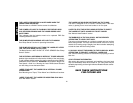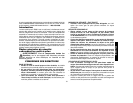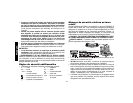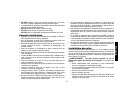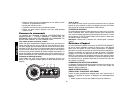
• Go to surface #1 and mark the center of the beam. If it is difficult
to see the beam, use your Laser Enhancement Glasses, Target
Card or optional DW0732 Digital Laser Detector.
• Go to surface #2 and mark the center of the beam.
• Loosen the screw holding the Laser to the tripod, but do not
remove the Laser.
• Rotate the Laser 180˚ (Fig. BB)
• Level the Laser again, following the procedure in the “Horizontal
Leveling” section of this manual.
• Turn the unit on so the lasers are on and rotating.
• Go to surface #1 and mark the center of the beam.
• Go to surface #2 and mark the center of the beam.
• Measure the difference between the marks on surface #1.
• Measure the difference between the marks on surface #2.
• The difference between the marks on surface #1 must equal the
difference between the marks on surface #2. If these are not equal,
there was user set up or marking error.
• If the difference between the marks on surface #1 is 1/4" or less,
the Laser is properly calibrated.
• If the difference between the marks on surface #1 is more than 1/4",
have your Rotary Laser calibrated at a D
EWALT service center.
HORIZONTAL CHECKING FOR SIDE-TO-SIDE TILT ERROR
• Set up tripod midway between 2 vertical surfaces 100' from each
other.
• Mount your Rotary Laser on a tripod so that it is aimed side-to-side
toward the vertical surfaces.
• Level the Laser, following the procedure in the “Horizontal
Leveling” section of this manual.
• Turn the unit on so that the lasers are on and rotating.
• Go to surface #1 and mark the center of the beam. If is difficult to
see the beam use one of the aids mentioned earlier.
• Go to surface #2 and mark the center of the beam.
• Loosen the screw holding the Laser to the tripod but do not remove
the Laser.
• Rotate the Laser 180˚.
• Level the Laser again, following the procedure in the “Horizontal
Leveling” section.
• Turn the unit on so that the lasers are on and rotating.
• Go to surface #1 and mark the center of the beam.
• Go to surface #2 and mark the center of the beam.
• The difference between the marks on surface #1 must equal the
difference between the marks on surface #2. If these are not equal,
there was user set up or marking error.
• If the difference between the marks on surface #1 is 1/4" or less,
the Laser is properly calibrated.
• If the difference between the marks on surface #1 is more than 1/4",
have your Rotary Laser calibrated at a D
EWALT service center.
CONE ERROR CHECK
• Your D
EWALT Rotary Laser contains 2 laser diode assemblies. It is
highly unlikely that both lasers would have shifted by identical
amounts. The easiest way to test for possible “cone error” is to
compare the two laser beams.
• Level the laser, following instructions in the “Horizontal Leveling”
section of this manual.
• Quick Check:
1. Turn the unit on so that the lasers are on and rotating.
2. You should see a single red line on a vertical surface. If you see
a double line, have your Rotary Laser calibrated by a DeWALT
service center.
• Turn unit on so that the lasers are on but
NOT
rotating.
• Using the Manual Rotation Button, rotate the head so that the
lasers appear as two dots on a vertical surface about 25' away.
9
English



